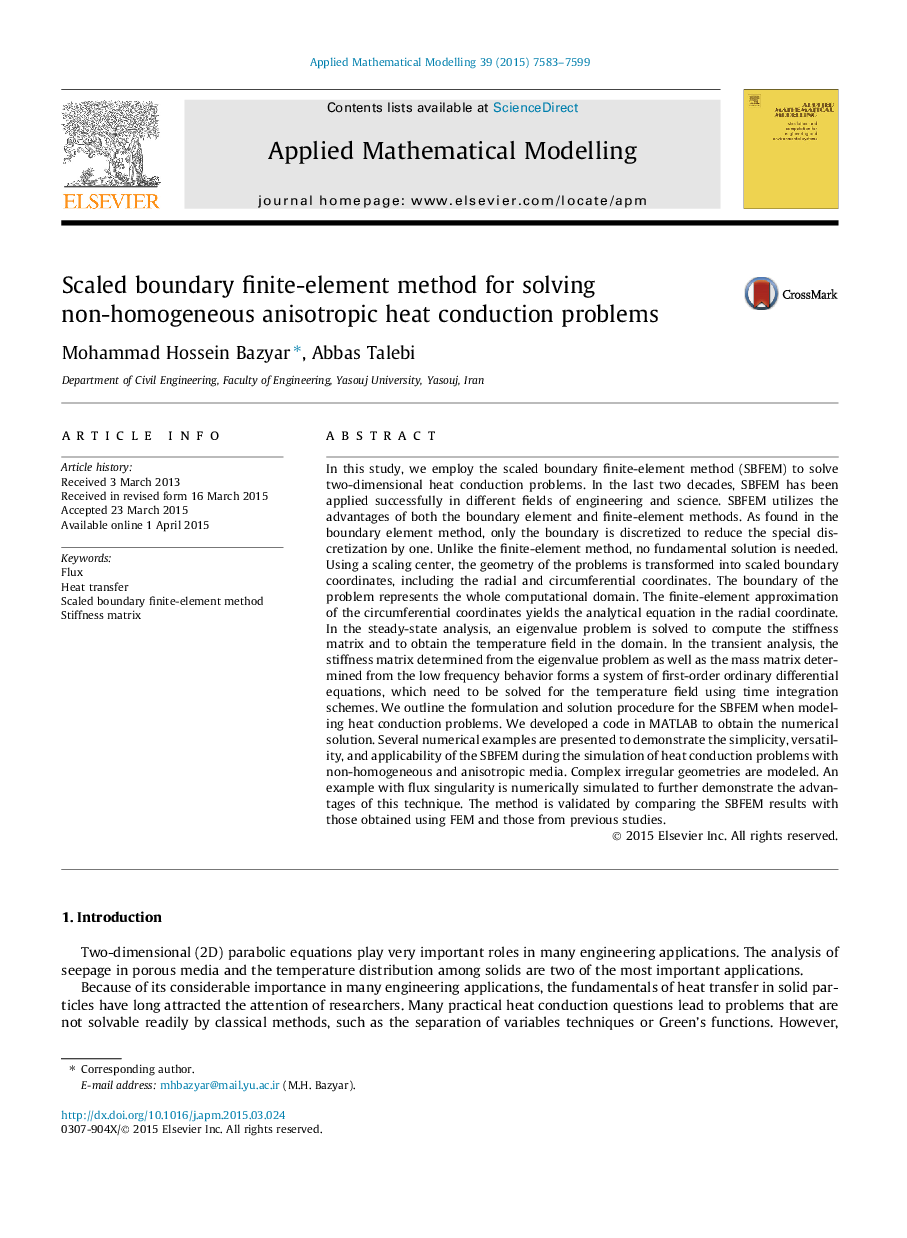| Article ID | Journal | Published Year | Pages | File Type |
|---|---|---|---|---|
| 1703023 | Applied Mathematical Modelling | 2015 | 17 Pages |
In this study, we employ the scaled boundary finite-element method (SBFEM) to solve two-dimensional heat conduction problems. In the last two decades, SBFEM has been applied successfully in different fields of engineering and science. SBFEM utilizes the advantages of both the boundary element and finite-element methods. As found in the boundary element method, only the boundary is discretized to reduce the special discretization by one. Unlike the finite-element method, no fundamental solution is needed. Using a scaling center, the geometry of the problems is transformed into scaled boundary coordinates, including the radial and circumferential coordinates. The boundary of the problem represents the whole computational domain. The finite-element approximation of the circumferential coordinates yields the analytical equation in the radial coordinate. In the steady-state analysis, an eigenvalue problem is solved to compute the stiffness matrix and to obtain the temperature field in the domain. In the transient analysis, the stiffness matrix determined from the eigenvalue problem as well as the mass matrix determined from the low frequency behavior forms a system of first-order ordinary differential equations, which need to be solved for the temperature field using time integration schemes. We outline the formulation and solution procedure for the SBFEM when modeling heat conduction problems. We developed a code in MATLAB to obtain the numerical solution. Several numerical examples are presented to demonstrate the simplicity, versatility, and applicability of the SBFEM during the simulation of heat conduction problems with non-homogeneous and anisotropic media. Complex irregular geometries are modeled. An example with flux singularity is numerically simulated to further demonstrate the advantages of this technique. The method is validated by comparing the SBFEM results with those obtained using FEM and those from previous studies.
